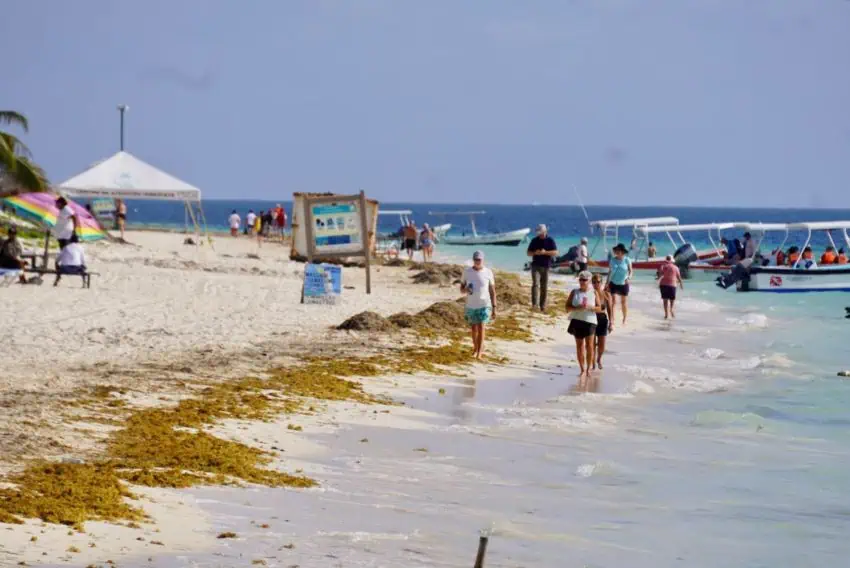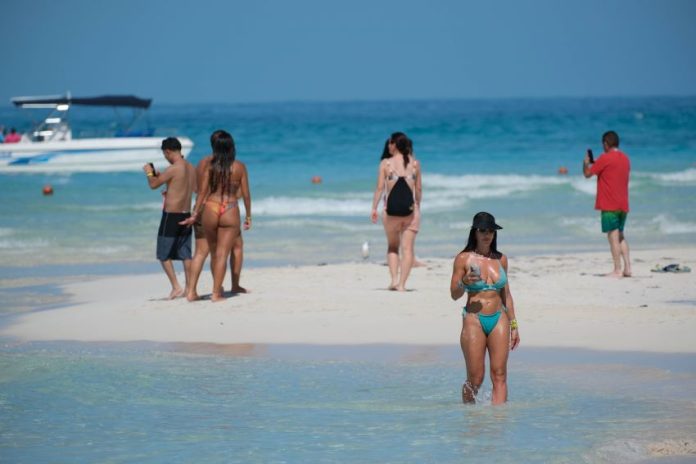The government of Quintana Roo has announced that the 2024 sargassum season is officially over.
In the Riviera Maya, sargassum season usually lasts from May to November, although it can vary depending on the climatic and oceanographic conditions of each year. This year, the season officially ended on Nov. 14.

During a press conference, Governor Mara Lezama recognized the efforts of all those who contributed to keeping the beaches clean in Quintana Roo, from the federal government to state employees, civil society organizations and private companies.
Lezama said that this year, 37,000 tonnes of sargassum were collected from the shallow waters and beaches of Quintana Roo’s coast, 60% more than in 2023, when the season closed with over 22,000 tonnes of sargassum.
The budget to collect sargassum and clean Quintana Roo’s beaches this year amounted to 125.6 million pesos (US $6.2 million), Lezama said.
Vice Admiral Ramón Enríquez noted during the press conference that the navy deployed over 300 elements to collect sargassum, as well as a sargassum ship, 22 sargassum boats and a fleet of smaller vessels, in addition to containment barriers, beach sweepers and collector bands.
“We will continue working 24/7, without rest, to have clean beaches,” Lezama stressed.
No #Sargassum here today!
📅 Nov 14, 2024 #Mexico #Mexique #PlayadelCarmen Playacar
Check the arrival map to see affected areas and find clean beaches.
👉 https://t.co/lxnqFu8rW1#sargazo #sargasse#sargassummonitoring #SurveillancedesSargasses #MonitoreodeSargazo #beach #playa pic.twitter.com/nV13QCZrJA— Sargassum Monitoring® (@SargaMonitoring) November 14, 2024
Why is sargassum so unwelcome?
Sargassum is a brown seaweed that spends its life floating on the ocean’s surface. While it is naturally beneficial to the marine ecosystems in the open ocean, once it reaches the coast, it decomposes and becomes harmful to marine life, plants, coral and human health. It also gives off a foul smell similar to rotten eggs.
Due to climate change, the presence of sargassum has increased on the beaches of many destinations with crystal-clear waters and white sand. While Mexico was one of the first countries to report sargassum on its beaches, this environmental problem affects coasts from western Africa to the eastern American continent.
In Mexico, sargassum affects the entirety of the Mexican Caribbean.
The sargassum forecast for 2025
According to Esteban Amaro Mauricio, director of the Quintana Roo Sargassum Monitoring Network, January or February 2025 may see the early arrival of sargassum with a significantly higher concentration expected in April or May.
However, if the trends of the past two years continue, the summer months of 2025 could see a reduced number of sargassum as it may be diverted to the north by ocean currents.
With reports from El País, La Jornada Maya and Sipse
